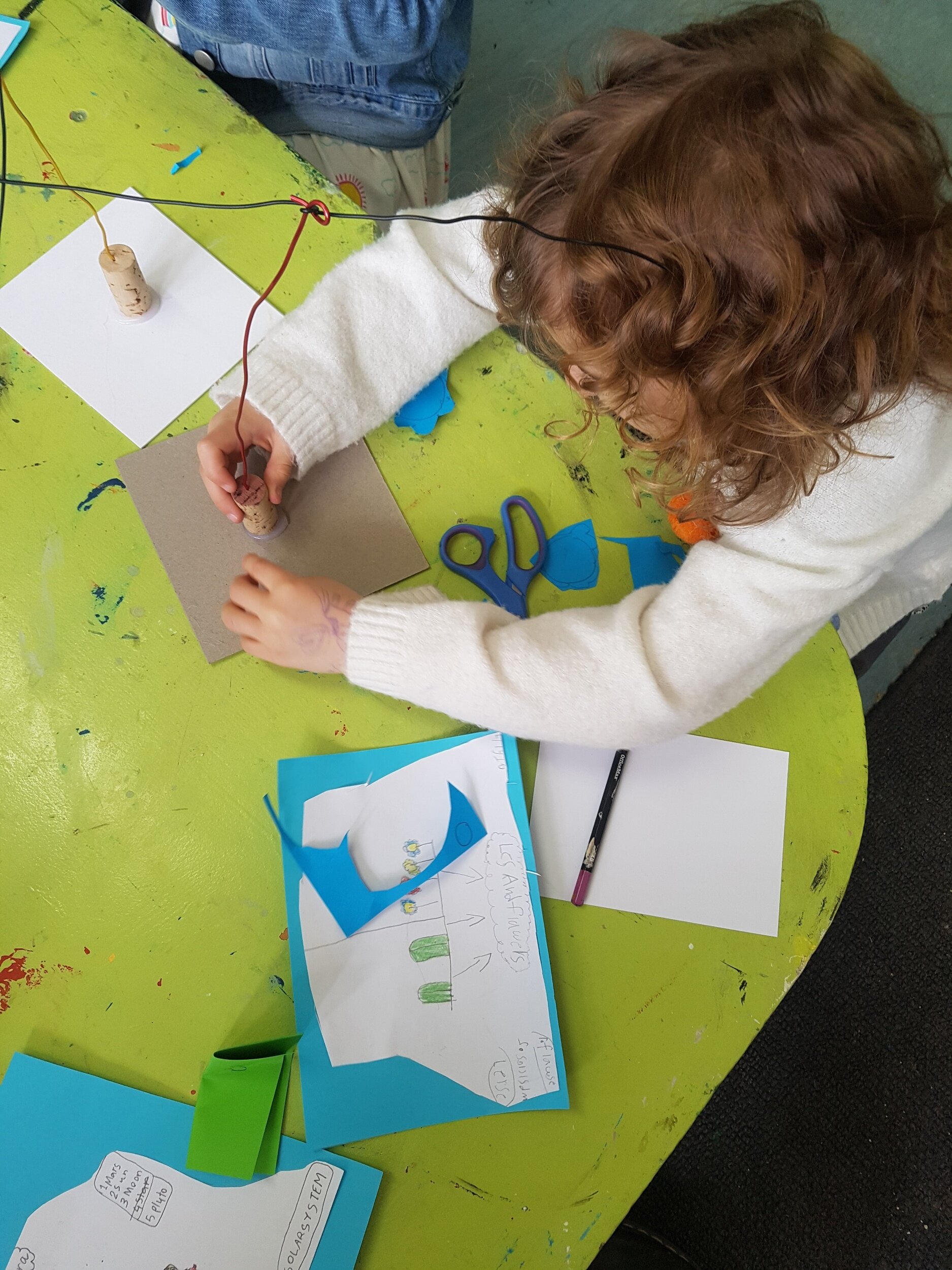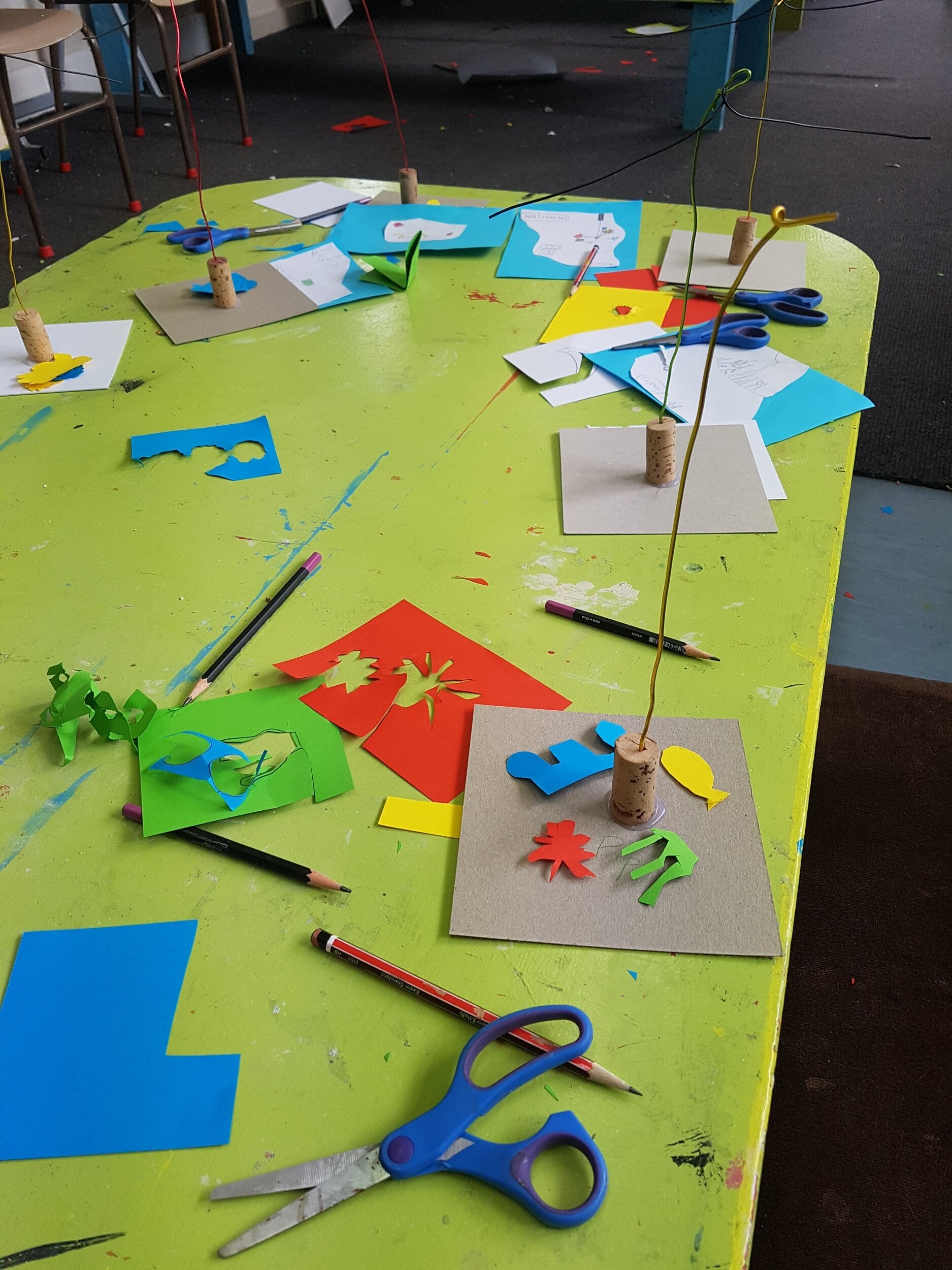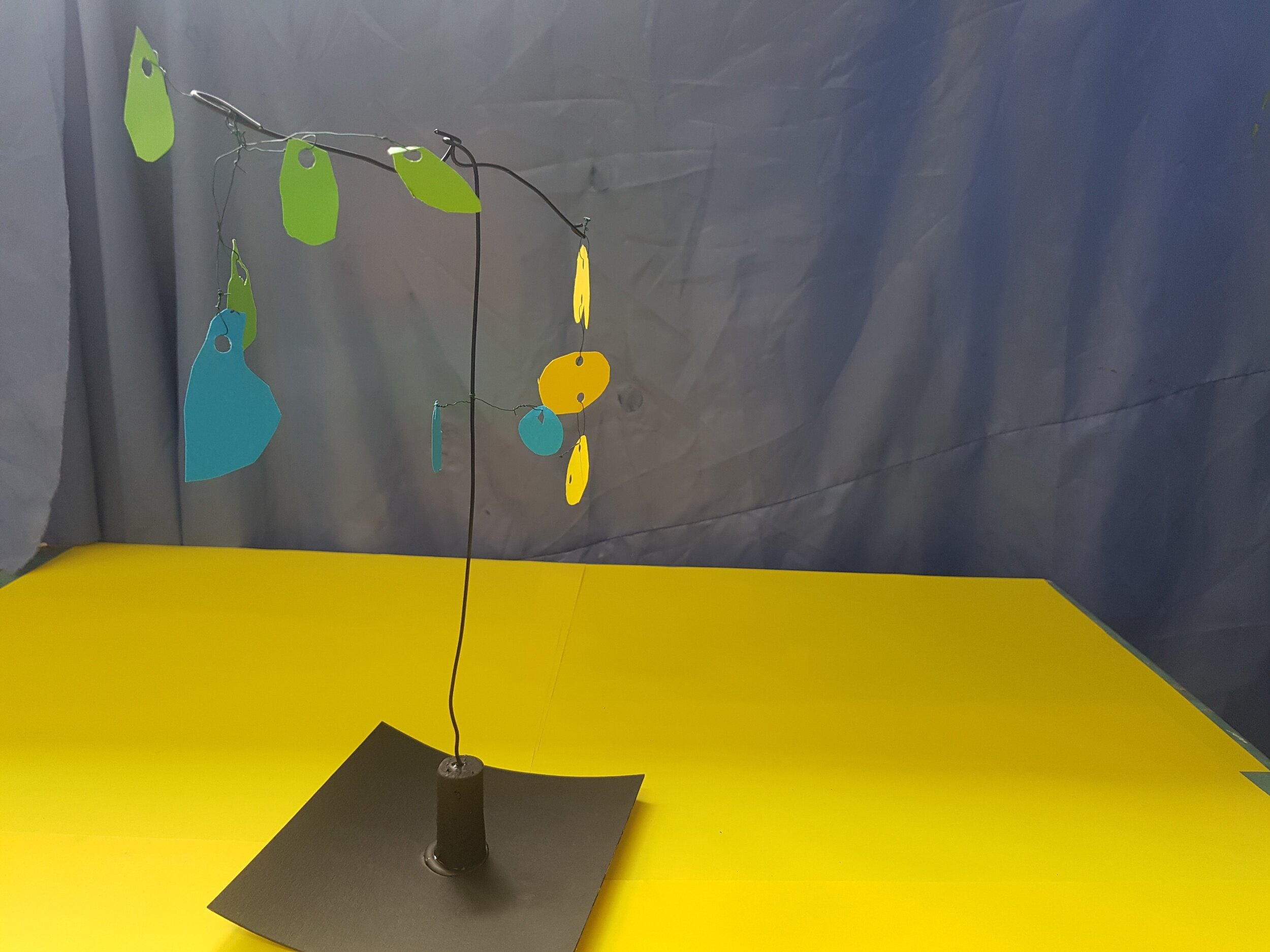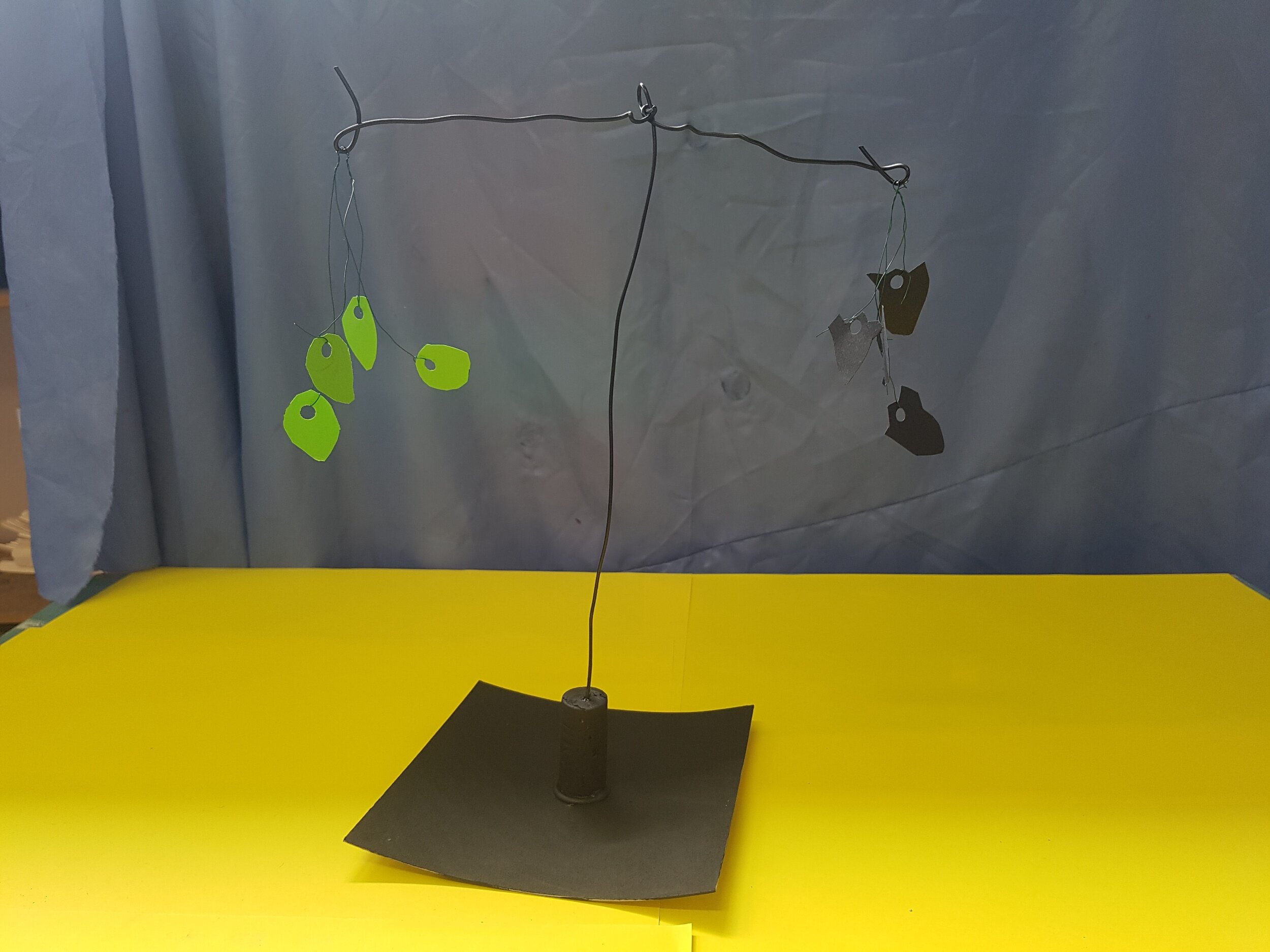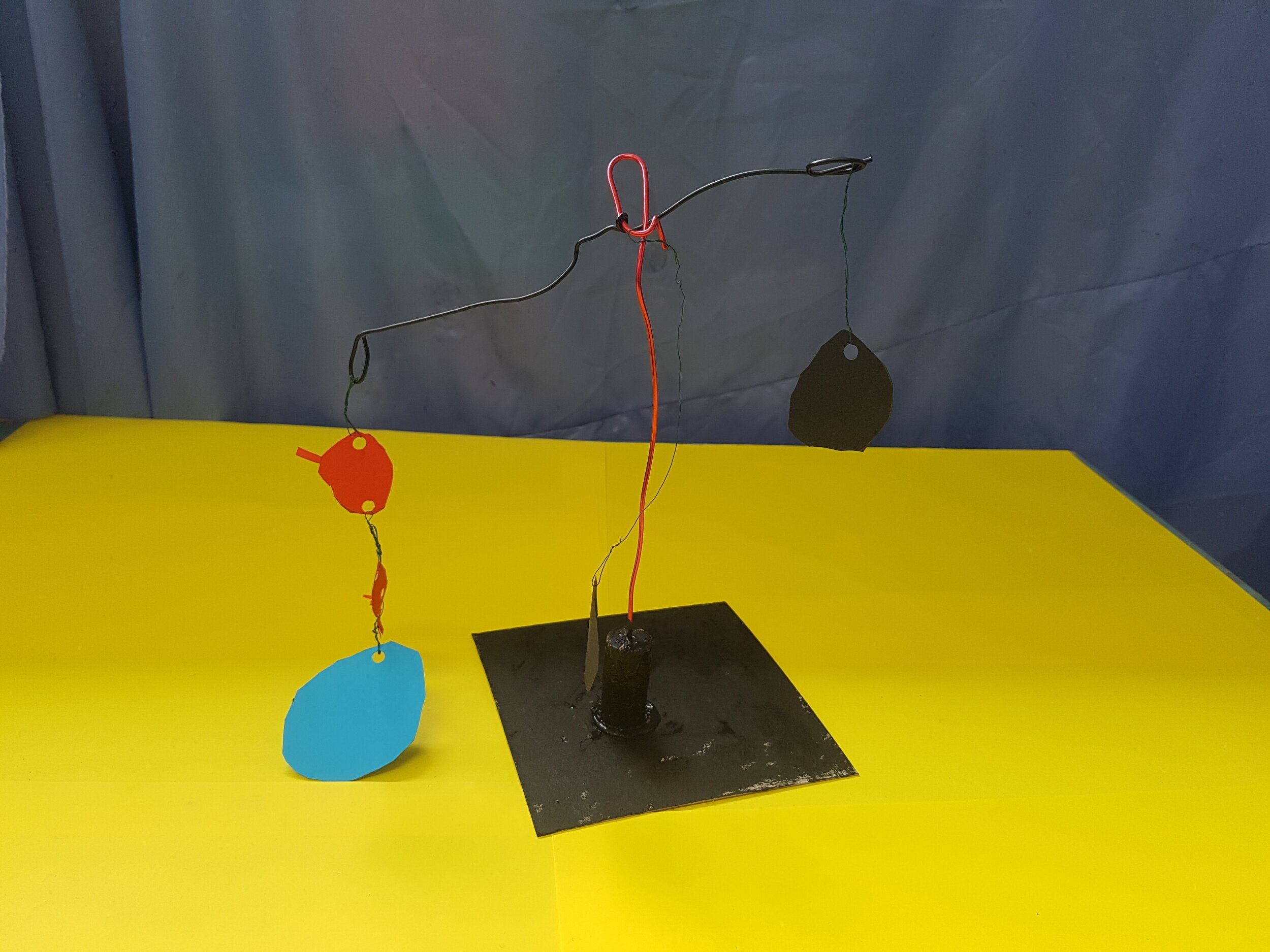Nature Inspired Sculptures in the Style of Alexander Calder
Today I had Alex’s class and a few students from Amy’s class. They explored balance, colour and shape by studying the art of Alexander Calder. Alexander Calder was a kinetic artist who created multi-layered, geometric mobiles. His designs were often based on nature, such as Snow Flurry, 1950 and Two Moons, 1969. We had a look at images and videos of some of Calder’s works. The students had a discussion about the materials, colours and design of Calder’s artworks.
We then visited the kids section of the Tate Modern website to look at some information about Calder. The Tate Modern website has a tonne of wonderful articles and activities for kids, I would recommend checking it out if you have the time.
The students learnt that Alexander Calder invented the mobile and that he made many floating structures inspired by shapes in nature. Before starting their own mobiles the students made sketches to plan out their designs and think about how they would get their structures to balance. I loved the range of different designs that the students came up with, they were truly inspired by nature in their planning. The ideas included the solar system, space, fruit growing on trees, deconstructed flowers, leaves and sea shells.
The students cut out their cardboard shapes, twisted the wire structure and used hot glue to connect the wire to the base. It was challenging twisting the wire tight enough to make sure that the shapes remained connected to the mobile. I was very proud of the way the students showed resilience and persevered with the task. The finished sculptures are great, everyone managed to make a mobile that represents something in nature and moves freely in the wind. I had a fun day today and am looking forward to teaching this lesson again soon.


